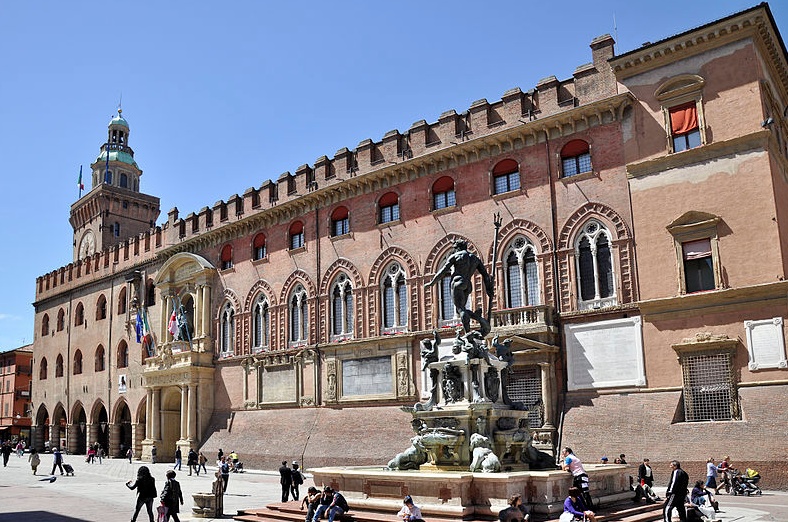- Read offline
- Access all content
- Use the in-app Map to find sites, and add custom locations (your hotel...)
- Build a list of your own favourites
- Search the contents with full-text search functionality
- ... and more!
Palazzo d'Accursio (or Comunale)
Bologna's City Hall

Filling the western side of the Piazza Maggiore, the crenellated Palazzo Comunale incorporates the Casa Accursio of 1287 (the arcaded section, once the home of the great medieval Jurist and law professor Accursio), and the 1425 annexe by Fioravante Fioravanti. It has been the centre of local politics ever since 1336, when the Casa Accursio became the seat of the Anziani (Elders), the magistrates in charge of the Commune.
The Palazzo took on its current fortress-like appearance in a rebuilding of 1365, when Cardinal Albornoz had taken over the city for the Church and feared a revolt. Fioravanti also added the tower, the Torre d'Accursio; other remodellings took place in the 16th century after the fall of the Bentivoglio.
An infamous massacre
The Palazzo has seen its share of recent violence as well. On 21 November, 1920, it was scene of the infamous massacre that marked the beginnings of the Fascist party in Bologna.
Images by Marco Assini from Italia, Palickap, Paul Hermans, Creative Commons Licence, Roberto Taddeo

